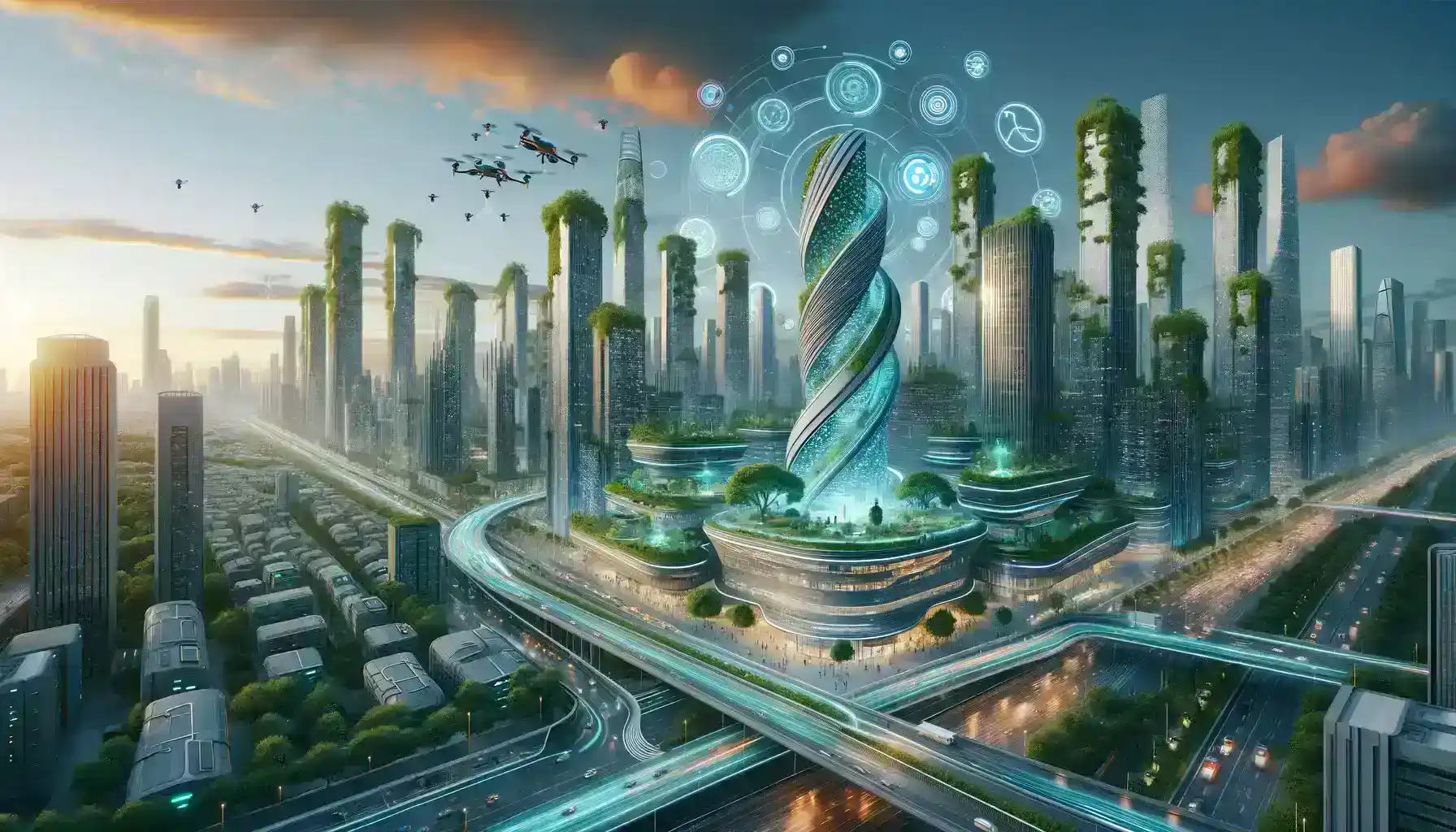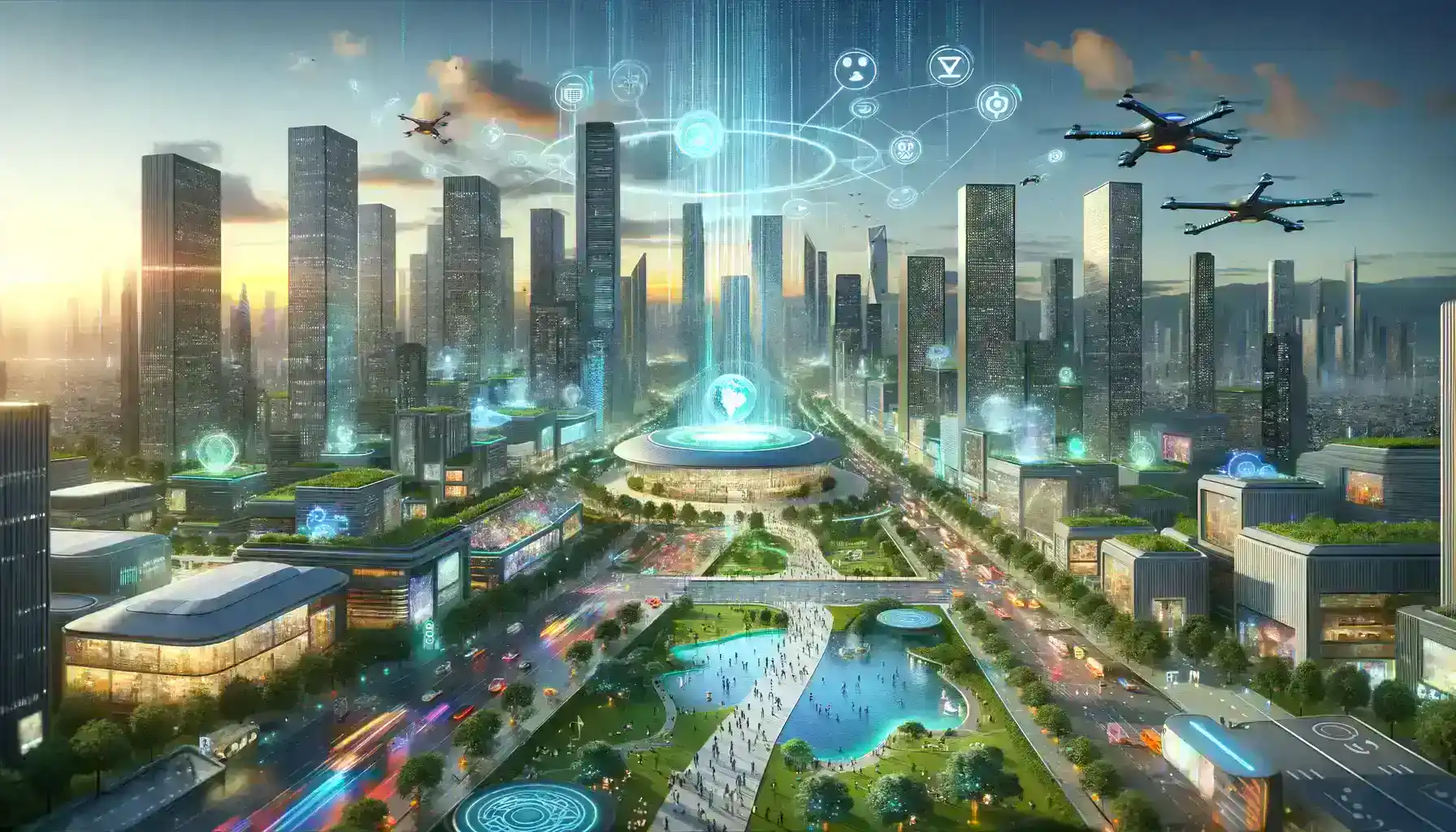Table of Contents
In the contemporary era, the convergence of Artificial Intelligence (AI) and architecture heralds a paradigm shift that transcends the confines of conventional building structures. AI Architecture emerges as a revolutionary concept, redefining the very essence of architectural design. It surpasses static, traditional spaces, ushering in a new era where intelligence becomes intrinsic to the physical environment.
At its core, AI Architecture involves the infusion of cutting-edge technologies such as intelligent systems, machine learning algorithms, and data analytics into the fabric of architectural design. This transformative integration breathes life into spaces, converting them from static entities into dynamic, responsive environments that actively engage with their occupants.
The cornerstone of AI Architecture 360 is visionary integration, a forward-thinking approach that anticipates the seamless fusion of AI technologies with architectural elements. It extends beyond the present, envisioning a future where structures not only accommodate but also actively enhance functionality, efficiency, and the overall user experience.
Visionary integration in AI Architecture is about more than just constructing physical spaces; it is an artful anticipation of how intelligent systems can harmoniously blend with design elements, creating environments that are not only aesthetically pleasing but also adaptive, sustainable, and future-ready. In essence, AI Architecture signifies a bold step toward designing spaces that embody the intelligence of tomorrow within the architectural blueprints of today.
The Components of AI Architecture 360

Intelligent Building Systems
In the domain of AI Architecture, cutting-edge building systems powered by AI take center stage. These include intelligent HVAC systems, intuitively adjusting to user preferences, and energy-efficient lighting that responsively caters to occupancy patterns. Together, these AI-driven elements harmonize to shape environments that are not only intelligent but also seamlessly adaptive, enhancing the quality of living and working spaces.
Adaptive Infrastructure
AI Architecture pioneers adaptive infrastructure, envisioning spaces where elements dynamically respond to user needs. Imagine walls seamlessly shifting to create flexible spaces and furniture intuitively adapting its layout based on daily activities. This intrinsic adaptability is the hallmark of AI Architecture, shaping environments that are not only intelligent but also responsive, fostering a dynamic harmony between the built environment and the ever-changing needs and activities of its inhabitants.
Transformative Experiences Enabled by AI Architecture
Enhanced User Comfort
At the forefront of AI Architecture, predictive analytics assumes a pivotal role, offering foresight into user behavior for proactive environmental adjustments. This dynamic integration optimizes user comfort while exemplifying energy conservation, showcasing the intelligence with which AI Architecture manages resources. The synergy between technology and design transforms spaces into responsive environments, ensuring sustainability and enhancing the living environment with precision.
Through predictive analytics, AI Architecture not only anticipates user needs but also actively contributes to a future where architectural spaces dynamically adapt to the evolving requirements of their inhabitants, striking a balance between efficiency, comfort, and environmental responsibility.
Sustainable Design
AI Architecture stands at the vanguard of sustainable design, revolutionizing spaces by intricately optimizing energy usage, maximizing spatial efficiency, and seamlessly integrating renewable technologies. These principles, driven by AI, extend beyond mere aesthetics; they spearhead a transformative journey toward a greener, more sustainable future.
The strategy of advanced technology and architectural ingenuity within AI Architecture not only shapes intelligent environments but also acts as a catalyst for heightened environmental consciousness. This paradigm shift redefines how we conceive, construct, and inhabit living and working spaces, promising a harmonious coexistence of cutting-edge design and ecological responsibility.
Overcoming Challenges in AI Architecture Implementation
Technological Integration
In the domain of AI Architecture, seamless architects, engineers, and AI specialists are essential. This interdisciplinary collaboration is not just a response to the intricacies involved but a strategic imperative. By pooling their expertise, these professionals navigate the complexities, unveiling strategies for the smooth integration of AI into architectural designs.
Proactively addressing challenges, this collective synergy guarantees the delivery of innovative, functional, and ethically sound design solutions. Within this collaborative framework, the transformative power of artificial intelligence unfolds, reshaping the architectural landscape with forward-thinking, intelligent design solutions.
Ethical Considerations
Entrenched in our daily routines, AI Architecture captivates focus, prompting scrutiny of its ethical dimensions. This inquiry delves into the imperative for responsible design practices, underscoring the ethical considerations crucial to AI’s seamless integration. As AI becomes an integral part of our lives, prioritizing ethical norms within AI Architecture emerges as a necessity.
The delicate equilibrium between innovation and ethical responsibility becomes pivotal, steering us toward a future where intelligent design enriches lives without transgressing ethical standards—forging a path to conscientious and sustainable progress.
Future Prospects and Innovations in AI Architecture

Augmented Reality in Architectural Design
In AI Architecture, augmented reality (AR) revolutionizes the design process by empowering architects to dynamically visualize and refine creations in real-time. This transformative integration enhances precision and fosters creativity, providing architects with an immersive toolset. AR becomes a visionary lens through which architects shape intelligent and adaptive environments, bridging the gap between conceptualization and realization in a seamless and interactive manner.
The Role of AI in Urban Planning
AI Architecture redefines urban planning by orchestrating a transformation in everything from traffic management to resource allocation. This visionary integration shapes smarter, sustainable cities where intelligent systems elevate efficiency and environmental consciousness.
Within the AI-driven urban landscape, the fusion of architectural ingenuity and advanced technology becomes the cornerstone. This synergistic approach establishes the foundation for a future where cities seamlessly adapt to the diverse and evolving needs of their inhabitants, embodying a harmonious balance between innovation, efficiency, and the well-being of urban dwellers.
Case Studies
EcoSmart Residences
EcoSmart Residences exemplify the pinnacle of AI Architecture, where energy optimization meets resident-centric living. The system intuitively learns and adjusts to daily routines, seamlessly coordinating smart climate control, lighting, and security.
This harmonious integration not only enhances comfort but also achieves substantial reductions in environmental impact, marking a transformative stride towards sustainable and intelligent residential living.
SafeHaven Security
SafeHaven Security Solutions pioneers AI Architecture for adaptive security. By analyzing resident behavior patterns, the system dynamically adjusts monitoring and access control. This intelligent infrastructure ensures unparalleled safety, creating a secure environment that evolves in real-time to address emerging threats and safeguard residents effectively.
CollaborateHub
CollaborateHub Offices pioneers a transformative approach to workspaces, seamlessly integrating AI into its designs. Smart desk arrangements, crafted for optimal collaboration, foster a dynamic and interactive work environment. The automated climate control system responds to occupancy, ensuring comfort and energy efficiency.
This innovative integration not only adapts to individual work preferences but also significantly enhances productivity and employee well-being, creating a workplace that reflects the future of intelligent and people-centric office design.
Conclusion
AI Architecture 360 heralds a revolutionary evolution in our approach to conceiving, designing, and experiencing living and working spaces. It transcends traditional paradigms, marking a transformative shift towards intelligent, responsive, and future-ready environments. The integration of AI into architecture signifies more than just enhanced functionality; it is a commitment to creating spaces that actively contribute to individual well-being and the sustainability of our planet.
As pioneers shaping the future of smart environments, we recognize that AI-infused architecture is more than a technological advancement; it is a philosophy that prioritizes harmony between human needs and technological innovation. In this dynamic landscape, spaces cease to be mere structures and evolve into intelligent entities that adapt to our behaviors, preferences, and aspirations.
Embracing AI Architecture is an embarkation on a journey where innovation converges with vision. It is a journey where the spaces we inhabit not only serve our immediate needs but also anticipate and fulfill our desires, fostering an environment that actively contributes to our overall well-being. Moreover, AI Architecture is a commitment to environmental stewardship, creating sustainable spaces that align with the ecological balance of our planet.
In this journey of integration and innovation, we forge a future where our living and working spaces become catalysts for positive change, reflecting a harmonious synergy between human life, technological progress, and environmental responsibility.